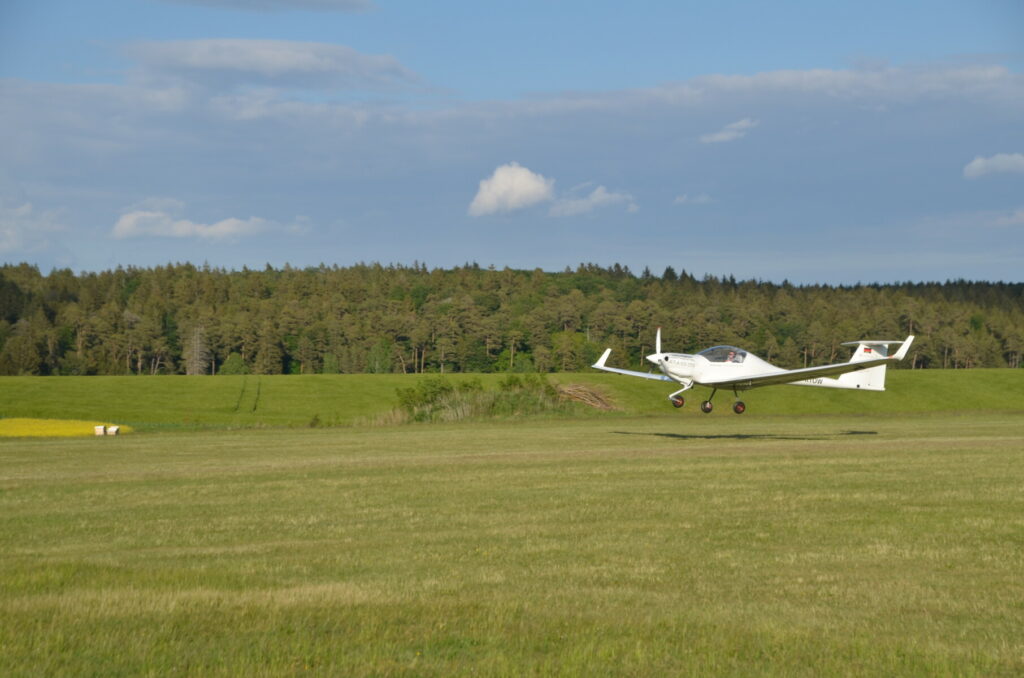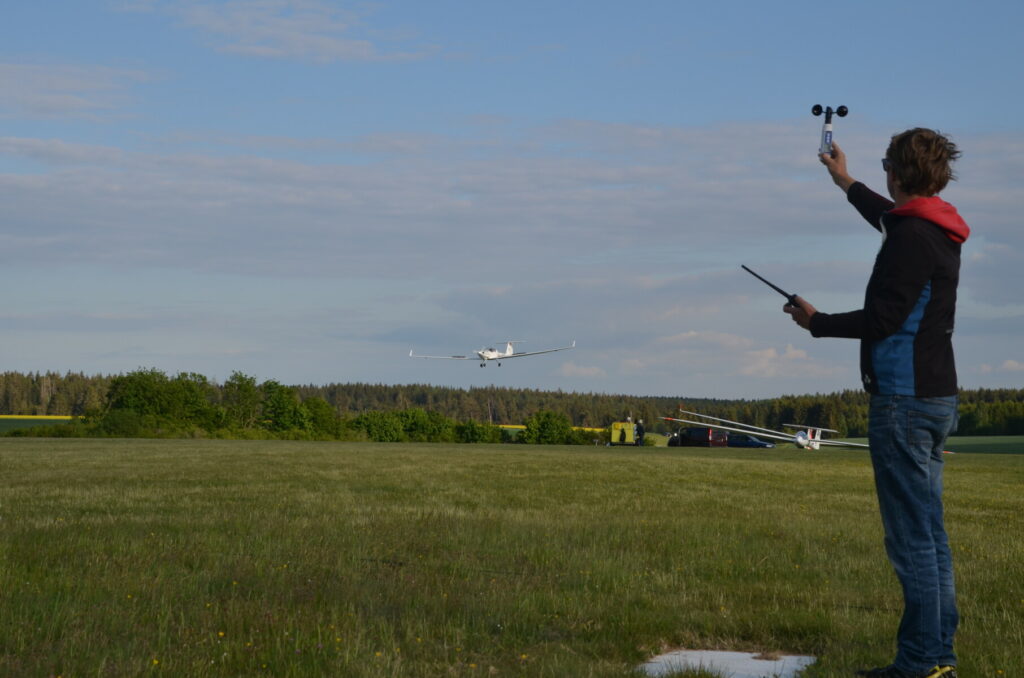
Last week we told you that flight testing on the fs35 was to resume shortly. Now, we can tell you a bit about the progress we’ve made so far.
We’ve worked on two separate fields: crosswind test and airspeed indicator calibration.
In a crosswind test, the airplane is flown with crosswinds up to a certain windspeed. Through these tests, it can be determined if the airplane can be safely operated with crosswinds. Especially important here is the airplane’s behaviour during takeoffs and landings. During the tests, we’ve managed to expand our flight envelope to include 10 kt (18,5 km/h; 11,5 mph) crosswinds.
An airspeed indicator calibration allows us to verify the indicated airspeed (IAS) and to determine the error in the pitot-static system. To do this, the airplane is flown in four separate directions (northern, eastern, southern, western) with a constant indicated airspeed. The airplane’s ground speed, along with the altitude, direction, and outside air temperature, is measured by an on-board flight computer from Dynon Avionics. With these values, it was possible to calculate the effects of wind and air density on the pitot-static system and determine the ground speed, which was then compared to the indicated airspeed (IAS).
These are the first steps with which we’ve started flight testing this season. In the coming weeks, we will be testing the fs35’s flight behaviour with different centers of gravity.



